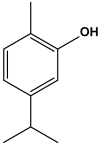A Review on Reinforcements and Additives in Starch-Based Composites for Food Packaging
- PMID: 37447617
- PMCID: PMC10346627
- DOI: 10.3390/polym15132972
A Review on Reinforcements and Additives in Starch-Based Composites for Food Packaging
Abstract
The research of starch as a matrix material for manufacturing biodegradable films has been gaining popularity in recent years, indicating its potential and possible limitations. To compete with conventional petroleum-based plastics, an enhancement of their low resistance to water and limited mechanical properties is essential. This review aims to discuss the various types of nanofillers and additives that have been used in plasticized starch films including nanoclays (montmorillonite, halloysite, kaolinite, etc.), poly-saccharide nanofillers (cellulose, starch, chitin, and chitosan nanomaterials), metal oxides (titanium dioxide, zinc oxide, zirconium oxide, etc.), and essential oils (carvacrol, eugenol, cinnamic acid). These reinforcements are frequently used to enhance several physical characteristics including mechanical properties, thermal stability, moisture resistance, oxygen barrier capabilities, and biodegradation rate, providing antimicrobial and antioxidant properties. This paper will provide an overview of the development of starch-based nanocomposite films and coatings applied in food packaging systems through the application of reinforcements and additives.
Keywords: active packaging; additives; biobased; biopolymers; nanocomposite; nanoparticles; reinforcement; starch.
Conflict of interest statement
The authors declare no conflict of interest.
Figures




















Similar articles
-
Bio-based active food packaging materials: Sustainable alternative to conventional petrochemical-based packaging materials.Food Res Int. 2020 Nov;137:109625. doi: 10.1016/j.foodres.2020.109625. Epub 2020 Aug 14. Food Res Int. 2020. PMID: 33233213 Review.
-
Recent advances in biobased and biodegradable polymer nanocomposites, nanoparticles, and natural antioxidants for antibacterial and antioxidant food packaging applications.Compr Rev Food Sci Food Saf. 2022 Jul;21(4):3673-3716. doi: 10.1111/1541-4337.12990. Epub 2022 Jun 17. Compr Rev Food Sci Food Saf. 2022. PMID: 35713102 Review.
-
Bionanocomposites materials for food packaging applications: Concepts and future outlook.Carbohydr Polym. 2018 Aug 1;193:19-27. doi: 10.1016/j.carbpol.2018.03.088. Epub 2018 Mar 27. Carbohydr Polym. 2018. PMID: 29773372 Review.
-
Impact of metal nanoparticles on the mechanical, barrier, optical and thermal properties of biodegradable food packaging materials.Crit Rev Food Sci Nutr. 2021;61(16):2640-2658. doi: 10.1080/10408398.2020.1783200. Epub 2020 Jul 7. Crit Rev Food Sci Nutr. 2021. PMID: 32631073 Review.
-
The Effect of Nanofillers on the Functional Properties of Biopolymer-based Films: A Review.Polymers (Basel). 2019 Apr 12;11(4):675. doi: 10.3390/polym11040675. Polymers (Basel). 2019. PMID: 31013855 Free PMC article. Review.
Cited by
-
Enhancing the Biodegradability, Water Solubility, and Thermal Properties of Polyvinyl Alcohol through Natural Polymer Blending: An Approach toward Sustainable Polymer Applications.Polymers (Basel). 2024 Jul 27;16(15):2141. doi: 10.3390/polym16152141. Polymers (Basel). 2024. PMID: 39125167 Free PMC article.
-
Advanced starch-based films for food packaging: Innovations in sustainability and functional properties.Food Chem X. 2025 Jun 17;29:102662. doi: 10.1016/j.fochx.2025.102662. eCollection 2025 Jul. Food Chem X. 2025. PMID: 40612767 Free PMC article. Review.
-
Production of Starch-Based Flexible Food Packaging in Developing Countries: Analysis of the Processes, Challenges, and Requirements.Foods. 2024 Dec 18;13(24):4096. doi: 10.3390/foods13244096. Foods. 2024. PMID: 39767042 Free PMC article. Review.
-
Characterization of Polylactic Acid Biocomposites Filled with Native Starch Granules from Dioscorea remotiflora Tubers.Polymers (Basel). 2024 Mar 25;16(7):899. doi: 10.3390/polym16070899. Polymers (Basel). 2024. PMID: 38611157 Free PMC article.
-
Bio-Based and Biodegradable Polymeric Materials for a Circular Economy.Polymers (Basel). 2024 Oct 28;16(21):3015. doi: 10.3390/polym16213015. Polymers (Basel). 2024. PMID: 39518225 Free PMC article. Review.
References
-
- Plastics Europe Plastics-the Facts 2022 OCTOBER. 2022. [(accessed on 1 May 2023)]. Available online: https://plasticseurope.org/wp-content/uploads/2022/10/PE-PLASTICS-THE-FA....
Publication types
Grants and funding
LinkOut - more resources
Full Text Sources

